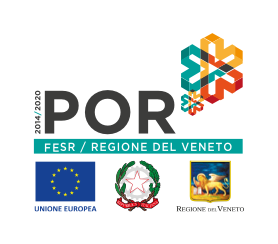The origins
The events of the Zoldo Valley, far from the commercial traffic and economic interest, are obscure until the late Middle Ages. It can be assumed that, during prehistoric times, the area was not permanently inhabited (while in other valleys in the Dolomites signs of permanent settlements were found) and it wouldn’t have been inhabited during the pre romans and the Roman times (probably Nordic people passed by). There are three inscriptions about the era, localized around the Civetta, probably indicating the limits of Iulium Carnicum territories (Zuglio, in the province of Udine) and Bellunum (Belluno). For centuries Zoldo was therefore a border area, later between Belluno territories (to which it belongs) and Cadore.
The Serenissima
In 1508 the fights between Venice and the League of Cambrai took place. Many people of Zoldo contributed to the victory of the Serenissima as leaders of the commander Bartolomeo d’Alviano. From this moment on the valley became prosperous thanks to forestry, which provided the wood for the Arsenal and the piles of Venice, and especially the iron business (just think about the many place names that recall the existence of workshops and forges).Between the sixteenth and the eighteenth centuries there were several buildings that still bear witness to the flourishing past.
Nineteenth and Twentieth Century
After the fall of Venice, the valley passed from the French to the Austrians and vice versa, and finally became Austrian. The new occupants financed several public works; in particular, the state road 251 was improved and it was made a topographic map of the Lombard-Venetian Kingdom , important because it can provide an accurate representation of the mountainous territory. After participating in the events of the Risorgimento, Zoldo Alto, Zoppè and Forno became common of the Kingdom of Italy (1866) (the first born from the great rule of Coi, from the associated Rules of Mareson, Pecol, Pianaz and Fusine and the Rule St. Titian or Goima). During World War I, Zoldo had to endure the Austrian occupation until the liberation of November 3rd, 1918.
Emigration
Already at the beginning of the nineteenth century in Zoldo appeared the first signs of massive emigration, and in any case also in previous centuries the villagers had sought work away from home. Numerous labor was dropped to the arsenal of Venice to exercise the “mechanical arts” or that of “shipwright”, for which the people of Zoldo were highly sought after, and many others reached of ‘CEE mines and construction sites to days of ‘Austro Hungarian empire. More significant, and warning of a lucky future, however, are the first elements of business that began in the second half of the nineteenth century in the form of seasonal and itinerant workers. To the figure of the woodcutter and blacksmith “zoldano” we have to associate that hawker activities, in which he did not fail to stand out, as it was for example for the Colussi family, originally from Pianaz, emigrated to Venice in 1700 to make biscuits. At the end of the century the emigration to the Americas began, especially to Central and South America, as recalls the bridge over the Maé in Forno, christened Rio Jordao on the occasion of the twinning with the small village of Santa Caterina state, in Brazil, where even today the “zoldano” dialect is spoken.
Zoldo, The Valley of Ice Cream
The Zoldani first roamed the Empire cities with “caudiere” of baked pears or baskets of cookies and caramels; then they began to sell “sorbet” with the typical carts, and in the period between the wars there was no city in Europe that did not count a Zoldo ice cream shop. Today the ice cream of Zoldo is known throughout the world, as far as China, Japan and South Africa, so that Zoldo is called “the valley of the ice cream”. Even today the Valley is made up mostly of ice cream makers emigrants who leave their native land every year to the first months of the year, and then return home on autumn. The emigration main goal is definitely to Germany, the country where the ice cream makers exported ice cream and still continue to export their arts and their culinary secrets, in the famous ice cream parlors that are known everywhere.
The Language
It is generally agreed that the “Zoldano” is, among the valleys of Belluno, the one that comes closest to the capital spoken (the felt-Belluno dialect). We surely notice Ladin influences but, as noted by Enzo Croatto, the valley has never had direct contact with the Tyrol, and therefore one can speak at most of “Venetian-Ladin” or “semiladino”. Some even note that these definitions are excessive and classify the spoken “Zoldano” as Venetian. In addition, the scholar Giovanni Frau has reconstructed the migratory currents that populated the valley, assuming that those from the north, which is precisely the Ladin area, were much more limited than those from Longarone and the area of Agordo. Despite everything, with the law 482/1999, the province of Belluno recognizes Ladin municipalities in the valley (but also those of the Agordino). The first document in zoldano extant writing is a translation of the prodigal son parable dated 2 May 1835. Blog posts about, they must remember mainly the vernacular of the Val di Zoldo, edited by Don Raffaello De Rocco in collaboration with Augusto Gamba from Bragarezza, and the vocabulary of Ladino-Venetian dialect of the Valley of Zoldo (Belluno), by Enzo Croatto.
